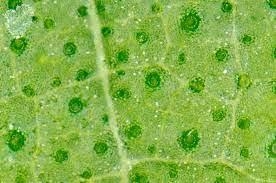As nights slowly get longer (by 2 minutes every 24 hours) and night time temperatures slowly begin to drop from the 70s into the high 60s, the plants that survived July's scorching temperatures slowly begin to come out of the state of semi-dormancy that is caused by high temperatures.

By mid-August most plants will show the first signs of renewed growth. Monitor the plants in your garden for tiny new buds and leaves and resume fertilization with a low-number, lower nitrogen fertilizer at one-quarter or half the application rate recommended on the fertilizer label. Avoid applying higher-nitrogen fertilizers that encourage rapid foliage production. Heat-stressed plants will return to a semi-dormant state during longer heat spikes and feeding plants that aren't able to grow only stresses them more. If daytime temperatures remain consistently higher than 100 degrees or if another heat spike occurs, wait to feed your plants until the temps cool a bit more later in the month. In recent years, gardeners have had to wait until September to resume fertilization due to a late summer cycle of consecutive heat spikes.
While you're watching and waiting for warm-season plants to recover from the heat you can start searching for seeds of drought and heat-tolerant cool-season vegetables and flowering annuals. Availability of seeds in seed catalogs, nurseries and garden centers is nearly back to pre-pandemic levels and growers and hybridizers are increasing the development of new varieties that can better withstand hot and dry growing conditions, including warmer and drier winters.
Weather patterns and planting timing is no longer predictable. Central Valley Master Gardeners can be among the first to adapt their choices of plants to warming growing temperatures and to experiment and test new varieties for recommendation to home gardeners. Starting your own transplants from seed in mid- to late-August allows for a six= to eight-week growing period with some flexibility for later planting if temperatures remain higher or if rains arrive early.
Note: Sudden limb (or branch) drop is a common occurrence on hot, windless summer days. One possible cause is an abrupt shift in water movement within the tree structure during periods of high temperatures. Heavier branches on older trees are most susceptible and the limbs fall without warning; they show no signs of disease or pest problems. Our tree-lined neighborhood has seen an increase this summer in sudden limb drop, perhaps due to much higher-than-normal rainfall amounts last winter.
The branches do not make a clean break from the trunk. Often, the bark is torn away for several feet above and below the branch junction, leaving a deep, long scar. Evaluating the extent of the damage, attempting to protect the exposed, underlying tissue from sun damage and restructuring and rebalancing the branch scaffolding is best performed by certified arborists not amateurs or the average home gardener.